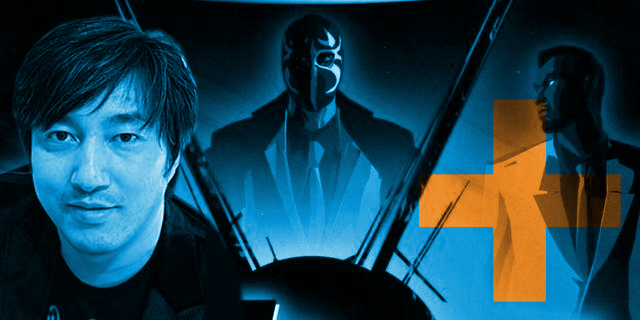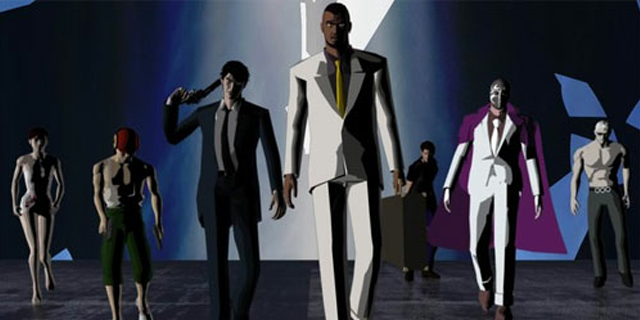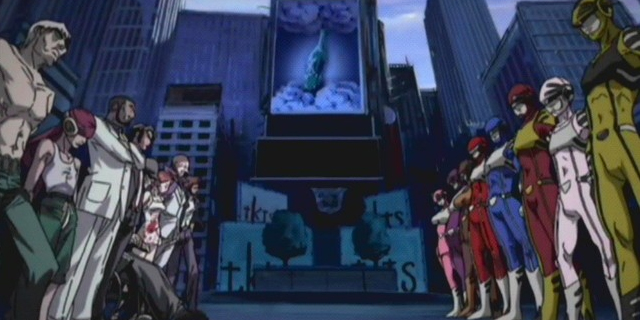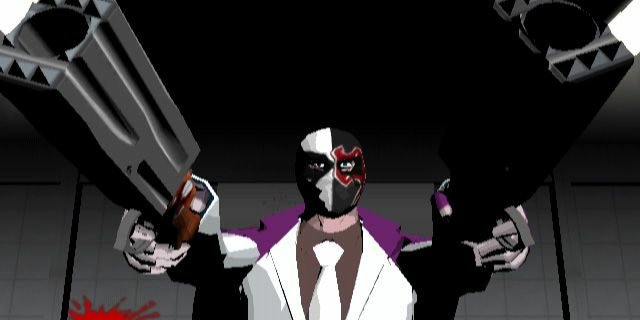
Usually in New Game+, I discuss components of games, gaming culture, and the industry as a whole that I find engaging and worth talking about. I’m going to do something a little different this time. To celebrate the release of Goichi Suda’s latest project, Lollipop Chainsaw, I feel it’s time to discuss the man behind such cult hits as Killer7 and the No More Heroes games. Not only am I a fan of Suda’s work, but I find the ideas that fuel these strangely compelling experiences absolutely fascinating.
I put Suda51 (as he’s known) right up there with Hideo Kojima as one of the most creative and inspirational people in the video game industry, or at the ones I personally look up to the most. In a similar fashion to many popular movie directors, they both rely on trademarks that are recognizably associated with their own visions. Both are creative forces that wear their inspirations on their sleeves and do so proudly. But, most importantly of all, they are the two people in the industry that inspired me to write about video games in the first place. I will have to save the Kojima discussion for another day, so let’s focus on Goichi Suda and, in particular, the games of his that I can’t help but love.

You can’t talk about Suda51 without bringing up Killer7, the game that introduced me and all of North America to him and his work. It is by far the best game I have played that shuns any and all gaming conventions for its own purpose: to tell a dark tale of a group of assassins, a terrorist organization and the psychological horrors that follow. This is far from a simple story, and it never once attempts to hide that fact. On the surface, the themes of yin and yang, spirituality, politics, and psychology are fairly obvious once you start to connect the dots.
However, once you dig deeper, there is so much more to find. Someone even needed to write a lengthy FAQ dissecting the many symbols and potential interpretations of the different plot elements for those who finished the game and were still confused. Needless to say, Killer7’s greatest strength (and perhaps greatest weakness) is its story. Love it or hate it, it’s hard to deny that Suda51 knows how to craft a story that is both original and, similar to Kojima and the Metal Gear Solid series, inspired by his many loves for film, anime, and even wrestling, to name a few.

Before even finalizing the systems and mechanics of this title, Suda 51 and Grasshopper Manufacture focused mostly on the visuals and the story, always keeping them at the forefront of the experience. Because of this, the gameplay boiled down to an on-rails third-person action game (with aiming all done in first-person). Because of this, the game never reached the same audience the publisher, Capcom, might have expected. Many gamers were unwilling to accept the game’s complex themes and simplistic gameplay.
I will never argue that Killer7’s gameplay is masterful or always compelling, but it’s clear from the beginning that Suda was never out to create a traditional game; he wanted to craft a story. The simplistic nature of the gameplay is still fun and, at times, challenging, but the game always kept me hooked with its mysterious protagonists and strange plot threads. Because of this, I ended up loving the gameplay, finding it to be complimentary to the strange stylistic choices in the narrative. Once you get past that initial barrier, it’s hard not to find a lot to live about Killer7, both as an interpretive interactive piece of fiction and as an artistic vision of an alternate version of our world.
Most importantly of all, it signifies Suda’s potential for the industry as a way to present new forms of storytelling. He wanted to create less of a traditional game and more of an interactive story with plenty of interesting, albeit simplistic mechanics that add to the overall experience.

It also is the kind of game I want to see more of. It showcases a creative team knowing exactly the kind of game they want to make and making it the way they intended with no compromises. Suda and his team had a story they wanted to tell and they told it. The discussion about the balance between gameplay and story can be had another time, but as time goes on, I begin to understand that you don’t always need a balance. Killer7 is a game that may fail based on its gameplay alone, but is a success as a complete experience, simplified mechanics and all.
I don’t think we ever will see another game quite like it, even from Suda himself, but I would love to see his design philosophy applied to other projects. I would never expect it to be on the same scale, but recent releases such as Dear Esther show that you can have a game that is simply there to propel an interesting narrative, one that allows for multiple interpretations and never spoon feeds you the answers. There is an interactive experience in place, one that serves a purpose and is interesting, but the story remains the focus from beginning to end. There is room in this industry for many different kinds of games and stories, but I never truly realized that until I played Killer7.
Next month, Andrew discusses Suda51’s more recent projects, including No More Heroes and Shadows of the Damned.



















